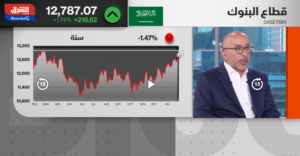We all remember a time in Dubai not that long ago when the booming real estate sector and limited supply conspired to make the city one of the most expensive.
New listings were coming up and down within minutes, open houses were mobbed, and keys were handed over the buyer who could literally get the cheque into the hands of the seller first. This was a savage market, and talk at that time in the press — when it was not enraptured by the growth — was on affordable housing and the efficacy of rental controls. And the need for regulation of brokers and developers such that the latter would not engage in price gouging.
Now, of course, the market conditions that prevail are substantially the opposite.
It’s a buyer and tenant-dominated market; landlords are bending over backwards to incentivise tenants and developers are offering payment plans that effectively have them playing the role of banks. The talk, however, these days, is all about vacancy rates, how this is unhealthy, of people leaving town and what the government needs to do to stimulate the sector.
Taking a step back, it quickly becomes obvious that we find both ends of the spectrum to be equally distressing. We do not like real estate prices and rents that run away from us, but when supply gets ahead of itself and/or when demand starts to flag and prices fall, we yearn for the good old days when real estate “flipping” was rampant and vacancies were so rare.
Why does this paradoxical mode of discourse permeate?
Clearly, the above is a simplified version of events that transpired, with the reality requiring a multi-variate explanation for what is happening. However, it is pertinent to point out that in a post-crisis world, where monies have chased up the value of assets (which has been the basis for much of recent economic growth), any correction that transpires is by necessity something that leads to a “more affordable society”.
The price for growth is always inflation. In this cycle it is more so assets than consumer prices, but one inevitably spills into the other. The converse is also true: the silver lining for any recession is lower prices.
Neither scenario is palatable for extended periods of time. However both scenarios are by definition necessary if objectives of affordability and growth — itself contradictory objectives — are to be achieved.
These cycles are to be taken advantage of, rather than bemoaned, and it is the role of governments to put into place the ability whereby people have the means to build their wealth in these cycles by inserting narratives.
Assets gain value when market participants adopt, or adapt, narratives about the ability of an asset to shape the future. These narratives have an economic, as well as a sociological, context.
When the narrative that sustains value falls apart (for example, when forecasts fail, or when other variables interact with the ecosystem), prices fall. Values reduce, but the debt remains, thereby triggering a series of cost-cutting measures that quickly reverberate throughout the economy as providers of capital, predominantly banks, refuse credit.
This is the standard boom-bust model. Only the magnitude of price fluctuation, the type of asset and the final date of reckoning vary.
However, the narrative often does change when this happens, as the government steps in and introduces structural reforms that sets the stage for further growth. Each cycle is different in the sense that the underlying economic systems emerge stronger and overall standards of living improve.
We are in one such cycle currently. The narrative going forward will reset to asset gains.
When it does, it would be helpful for investor psychology to remember that it is only by testing the extremes do we get some sense of perspective of the balance and the funambulistic role that governments play.
Sameer Lakhani is Managing Director of Global Capital Partners.





